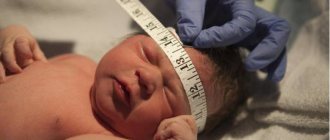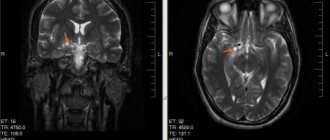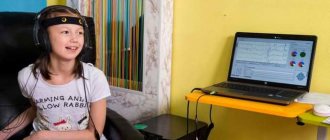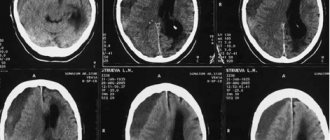The most common complaint that doctors hear from their patients is headache. Both adults and children complain about it. It is impossible to ignore this. Especially if there are other symptoms. Parents should pay special attention to the child’s headaches and the baby’s behavior, because he cannot say that he is in pain. Perhaps these are the consequences of a difficult birth or congenital anomalies, which can be determined at an early age. Maybe these are liquorodynamic disturbances. What is it, what are the characteristic signs of this disease in children and adults and how to treat it, we will consider further.
What does liquorodynamic disturbances mean?
Liquor is cerebrospinal fluid that constantly circulates in the ventricles, cerebrospinal fluid ducts and in the subarachnoid space of the brain and spinal cord. Liquor plays an important role in metabolic processes in the central nervous system, in maintaining homeostasis in brain tissue, and also creates a certain mechanical protection for the brain.
Liquorodynamic disorders are conditions in which the circulation of cerebrospinal fluid, its secretion and reabsorption are impaired. These processes are regulated by glands located in the choroid plexuses of the brain ventricles that produce fluid.
In the normal state of the body, the composition of the cerebrospinal fluid and its pressure are stable.
Causes
There are congenital and acquired etiological factors for the development of disorders of cerebrospinal fluid dynamics of the brain.
- pathologies of intrauterine development in the form of chromosomal aberrations at the genetic level;
- dysfunction of neuronal connections between the right and left hemispheres of the brain;
- congenital formations that imitate the cavities of the ventricles of the brain;
- syndrome of compression of the medulla oblongata and dysfunction of the cerebellum (Arnold-Chiari anomaly);
- disruption of the outflow of cerebrospinal fluid caused by insufficient functional development of the cerebellar vermis or tumor (Walker-Dandy anomaly).
- traumatic damage to the structures of the central and peripheral nervous system;
- tumors of various origins that disrupt the outflow of cerebrospinal fluid into the central nervous system and PNS;
- infectious and inflammatory diseases in the cells of the brain and spinal cord (meningitis, encephalitis, measles, rubella and others).
- Thrombosis and embolization of vascular walls of the brain.
What is the mechanism of violations
Let's consider how liquorodynamic disorders of the brain can develop:
- The rate of production and release of cerebrospinal fluid by the choroid plexuses increases.
- The rate of absorption of cerebrospinal fluid from the subarachnoid space slows down due to the blocking of the narrowing of the cerebrospinal fluid vessels due to previous subarachnoid hemorrhages or inflammatory diseases of the meninges.
- The rate of CSF production decreases during the normal absorption process.
The rate of absorption, production and release of cerebrospinal fluid is influenced by:
- On the state of cerebral hemodynamics.
- State of the blood-brain barrier.
The inflammatory process in the brain increases its volume and increases intracranial pressure. The result is poor circulation and blockage of the vessels through which the cerebrospinal fluid moves. Due to the accumulation of fluid in the cavities, partial death of intracranial tissue may begin, and this will lead to the development of hydrocephalus.
Preventive actions
It is very important to prevent the development of hydrocephalus and other disorders of cerebrospinal fluid dynamics in the intrauterine period.
Consultation with a geneticist is necessary for future parents who have a family history and have relatives with impaired cerebrospinal fluid circulation.
The main preventive measures in older age are:
- prevention and timely treatment of infectious pathologies;
- monitoring the performance of coagulation and anticoagulation systems;
- preventing the development of osteochondrosis and scoliosis.
Classification of violations
Liquorodynamic disorders are classified in the following areas:
- How does the pathological process proceed:
- Chronic course.
- Acute phase.
2. Stages of development:
- Progressive. Intracranial pressure increases and pathological processes progress.
- Compensated. Intracranial pressure is stable, but the ventricles of the brain remain dilated.
- Subcompensated. Great danger of crises. Unstable condition. Blood pressure can rise sharply at any moment.
3. In which cavity of the brain is the cerebrospinal fluid located:
- Intraventricular. Fluid accumulates in the ventricular system of the brain due to obstruction of the cerebrospinal fluid system.
- Subarachnoid. Liquorodynamic disturbances of the external type can lead to destructive lesions of brain tissue.
- Mixed.
4. Depending on the pressure of the cerebrospinal fluid:
- Hypertension. Characterized by high intracranial pressure. The outflow of cerebrospinal fluid is impaired.
- Normotensive stage. Intracranial pressure is normal, but the ventricular cavity is enlarged. This condition is most common in childhood.
- Hypotension. After surgery, excessive outflow of cerebrospinal fluid from the ventricular cavities.
Laboratory and instrumental diagnostics
Diagnosis of this type of pathology is based on a careful collection of clinical symptoms, possible causes and predisposing factors.
Laboratory diagnosis is based on the study of cerebrospinal fluid using a spinal puncture.
It is prohibited to perform a lumbar puncture if:
- hydrocephalus due to tumors;
- after surgery;
- ulcerative-necrotic changes in the skin at the puncture site (below the level of the 2nd lumbar vertebra);
- rupture of membranes with severe progressive bleeding;
- presence or signs of decreased intracranial pressure.
When examining the cerebrospinal fluid, an increase in protein levels is detected. The presence of lymphocytes is excluded. An increased number of lymphocytes is determined only in the presence of inflammatory changes - with tuberculosis, syphilis or encephalitis.
The most diagnostically valuable methods are computed tomography, magnetic resonance imaging and angiography. Computed tomography and magnetic resonance imaging determine the cause of irrational cerebrospinal fluid dynamics and possible methods of correction through surgery.
Angiography can reveal the presence of changes in the vascular walls, thrombotic and embolic obstacles that cause occlusion and increased ICP.
Causes congenital
There are congenital anomalies that can contribute to the development of liquorodynamic disorders:
- Genetic disorders in intrauterine development of the fetus.
- Agenesis of the corpus callosum.
- Dandy-Walker syndrome.
- Arnold-Chiari syndrome.
- Encephalocele.
- Stenosis of the cerebral aqueduct, primary or secondary.
- Porencephalic cysts.
Acquired reasons
Liquorodynamic disorders can begin to develop for acquired reasons:
- Spinal cord and brain injuries.
- Various infectious diseases and parasitic infections that affect the nervous system.
- Neoplasms inside the skull that block the cerebrospinal fluid pathways.
- Thrombosis.
- Intrauterine hypoxia in the first two days after birth.
- Papillomas of the choroid plexus.
Symptoms of disorders in infants
Liquorodynamic disorders in children under one year of age have the following symptoms:
- Frequent and profuse regurgitation.
- Unexpected crying for no apparent reason.
- Slow overgrowth of the fontanel.
- Monotonous crying.
- The child is lethargic and sleepy.
- Sleep is disturbed.
- Seams coming apart.
Over time, the disease progresses more and more, and signs of liquorodynamic disorders become more pronounced:
- Tremor of the chin.
- Twitching of limbs.
- Involuntary shudders.
- Life support functions are disrupted.
- Disturbances in the functioning of internal organs for no apparent reason.
- Possible squint.
Visually, you can notice the vascular network in the area of the nose, neck, and chest. When crying or tense muscles, it becomes more pronounced.
The neurologist may also note the following signs:
- Hemiplegia.
- Extensor hypertonicity.
- Meningeal signs.
- Paralysis and paresis.
- Paraplegia.
- Graefe's symptom.
- Nystagmus is horizontal.
- Delay in psychomotor development.
You should visit your pediatrician regularly. At the appointment, the doctor measures the volume of the head, and if pathology develops, changes will be noticeable. So, there may be such deviations in the development of the skull:
- The head grows quickly.
- It has an unnaturally elongated shape.
- The large and small fontanelles swell and pulsate.
- Sutures are coming apart due to high intracranial pressure.
All these are signs that a syndrome of liquorodynamic disorders is developing in an infant. Hydrocephalus progresses.
I would like to note that it is difficult to determine liquorodynamic crises in infants.
Classification
Taking into account the morphology, pathogenesis, cerebrospinal fluid pressure, clinical picture and course, there are several classifications of cerebrospinal fluid dynamics disorders. Most of them are used only in scientific and experimental environments. The following characteristics of the disease exist :
Features of clinical symptoms in children of the first year of life
In children under one year of age with cerebrospinal fluid circulation disorders, parents note frequent and profuse regurgitation, very slow overgrowth of fontanelles, suture dehiscence, spontaneous crying for no reason, after which the children become lethargic and drowsy. As the disease develops, the symptoms also increase, including twitching of the limbs, tremor of the chin, and involuntary shuddering of the baby.
It is very important for children under one year old to regularly visit the pediatrician . During the examination, the doctor, during the examination, measures the circumference of the child's head. Normally, the volume of the head increases by 6-7 cm in the first 3 months, and by 0.5-1 cm per month from the fourth month to one year. In the presence of pathological changes, the head grows very quickly and takes on an unnaturally elongated shape, usually in anteroposterior dimensions. The large and small fontanelles in such infants do not close, but rather swell and pulsate. Due to increased intracranial pressure and the plasticity of the connective tissue, the sutures separate. Thanks to this, children remain in the compensation stage for a long time. Increasing hydrocephalus is a clear sign of impaired cerebrospinal fluid dynamics.
When examined by a neurologist, focal neurological symptoms are noted: paralysis and paresis, paralysis and hemiplegia, extensor hypertonicity, nystagmus, Graefe's symptom, meningeal signs.
Young patients are characterized by monotonous crying and their sleep is often disturbed. In the area of the bridge of the nose, neck, and upper chest in sick children, a vascular network is pronounced, which becomes visible when the child tenses (crying, trying to raise his head, sit down). In young patients, it is difficult to identify liquorodynamic crises.
Children under one year of age may experience disorders of internal organs without objective reasons. Vital functions are impaired. Over time, such children begin to lag significantly behind in psychomotor development. Sometimes a mother’s attention is attracted by the child’s growing squint. An experienced ophthalmologist may already suspect a syndrome of liquorodynamic disorders based on changes in the fundus of the eye.
Clinic for children after one year
After the child’s skull has fully formed and the fontanelles have closed, the sutures have ossified, and symptoms of increased intracranial pressure begin to predominate. Children complain of headaches, apathy, followed by anxiety, impaired coordination of movements, gait, and speech.
Liquorodynamic headache occurs in attacks, often in the morning, and may be accompanied by nausea and vomiting. There is no relief after vomiting. Such children have poor vision, horizontal nystagmus is noted, and due to muscle paralysis they cannot look up. In severe cases, the “bobble doll head” symptom is observed. Increased symptoms are called “liquid dynamic crises.”
If the disease occurs at an early age, children speak poorly or do not speak at all . Changes in mental development from minimal to extreme idiocy. Such children use standard memorized phrases in their speech, often without understanding their meaning. They are always in a good mood. Children also have disorders of the endocrine system, most often they manifest themselves in the form of obesity and delayed sexual development. Over time, convulsive syndrome increases in young patients.
Clinical picture in the working population
In adults, the disease most often occurs due to injuries, tumors, infections and manifests itself in the form of high intracranial pressure. Such patients suffer from CSF headaches, dizziness, cardiac disorders and symptoms of the underlying disease. Liquorodynamic crises occur as a result of nervous shock or exacerbation of the underlying disease.
Diagnostics
In children under one year of age, the diagnosis of liquorodynamic disorders consists of collecting a pregnancy history, parental complaints, examining the child by specialists (neurologist, ophthalmologist), fundus examinations, and instrumental studies, including ultrasound, magnetic resonance imaging, neurosonography, computed tomography.
In children over one year of age, complaints are also collected for diagnosis, examined by specialists, and MRI and CT are used from instrumental studies.
In adults, the underlying disease plays a significant role in diagnosis.
ICD-10 classification
G.91. Acquired hydrocephalus.
G.94. Hydrocephalus in infectious and parasitic diseases and tumor processes.
The treatment method is chosen based on etiological factors, the patient’s age, and the presence of concomitant pathology. There are medicinal and surgical types of therapy.
Drug therapy is used to reduce the volume of circulating cerebrospinal fluid, its formation, and reduce intracranial volume. For this purpose, Diacarb and Furosemide are prescribed. These drugs are often used in neonatal practice, despite the risk of complications. To achieve maximum effect, drugs are combined in different dosages.
The decision to perform surgical treatment is made if it is necessary to reduce intracranial action and reduce neurological symptoms.
Indications for surgical treatment:
- occlusive form of hydrocephalus, confirmed by MRI data; lack of effect from drug treatment; liquorodynamic crisis.
In each case, the decision about surgical intervention is made individually.
Sources:
http://fb. ru/article/322881/likvorodinamicheskie-narusheniya-golovnogo-mozga-priznaki-lechenie
http://www. baby. ru/answers/children_up_to_year/category-4718050/question-514149198/
http://mozgius. ru/bolezni/nevrologiya/likvorodinamicheskie-narusheniya. html
Signs of liquorodynamic disorders in children after one year
After one year, a child’s skull is already formed. The fontanelles have completely closed and the sutures have ossified. If there are liquorodynamic disturbances in a child, signs of increased intracranial pressure appear.
There may be such complaints:
- Headache.
- Apathy.
- Worry for no reason.
- Nausea.
- Vomiting, after which there is no relief.
The following signs are also characteristic:
- Gait and speech are impaired.
- There are disturbances in the coordination of movements.
- Vision decreases.
- Horizontal nystagmus.
- In advanced cases, “bobble doll head”.
And also, if liquorodynamic disorders of the brain progress, the following deviations will be noticeable:
- The child speaks poorly.
- They use standard, memorized phrases without understanding their meaning.
- Always in a good mood.
- Delayed sexual development.
- Convulsive syndrome develops.
- Obesity.
- Disturbances in the functioning of the endocrine system.
- Lag in the educational process.
Liquorodynamic disorders of the brain: causes and symptoms
Headache does not allow you to lead a full active life. There are a huge number of causes of headaches - from completely trivial ones to manifestations of very serious diseases.
One of the causes of headaches is liquorodynamic disorders.
When a liquorodynamic crisis occurs in an adult, he can describe the symptoms from the onset of the attack until the moment of meeting with a neurologist; children cannot accurately convey their sensations, which significantly complicates the doctor’s task.
Things are bad for children under one year old. Children can only scream to notify others that something is bothering them. But what exactly? Understanding this is a difficult task for doctors and parents.
The syndrome of cerebrospinal fluid dynamics disorders is a pathological condition of the body in which the secretion, circulation and resorption of cerebrospinal fluid (CSF) washing the brain is impaired. The disease develops in a hypertensive or hypotensive type and is characterized by severe headaches and frequent crises.
Signs of abnormalities in babies older than one year
A year after birth, the baby’s fontanelles close, the sutures ossify, and the formation of the skull ends. An increase in intracranial pressure is accompanied by the following symptoms:
- constant pain;
- causeless anxiety;
- apathy (detachment, indifferent attitude towards the world around you);
- nausea and vomiting that does not relieve the condition;
- gait and speech disorders;
- coordination disorders;
- visual impairment;
- nystagmus horizontal.
The development of liquorodynamic disorders entails deviations that become noticeable to others:
- the child speaks poorly;
- he has obvious signs of obesity, convulsive syndrome
- thinks slowly (repeats memorized phrases without understanding their meaning);
- poorly masters the material, lags behind in his studies.
Mechanism of development of liquorodynamic disorders
There are several main mechanisms for the development of cerebrospinal fluid dynamics disorders.
1) An increase in the rate of secretion of cerebrospinal fluid (CSF) by the choroid plexuses.
2) Slowing the rate of cerebrospinal fluid resorption from the subarachnoid space due to obliteration of the cerebrospinal fluid channels after inflammatory diseases of the meninges or subarachnoid hemorrhages.
3) Slowing down the rate of cerebrospinal fluid production against the background of normal reabsorption of cerebrospinal fluid. Against this background, intracranial hypertension or intracranial hypotension may develop.
The rate of secretion and resorption of cerebrospinal fluid is influenced by the state of cerebral hemodynamics and the blood-brain barrier. An increase in brain volume due to edema or the development of intracranial space-occupying processes leads to increased intracranial pressure.
Intracranial hypertension is observed when the patency of the cerebrospinal fluid ducts is preserved, as well as when they are occluded at various levels, which leads to excessive accumulation of cerebrospinal fluid in cavities located above the level of blockage.
In case of liquorodynamic disorders, changes in cerebral hemodynamics are observed. With intracranial hypertension, due to malnutrition of the brain parenchyma, partial atrophy of the brain occurs over time, which leads to the development of hydrocephalus.
If there is a process that occludes (blocks) the cerebrospinal fluid pathways, then hydrocephalus develops above the level of occlusion (blockage).
Diagnosis of the disease in adults
If you experience headaches and the symptoms described above, you should consult a neurologist. To clarify the diagnosis and prescribe treatment, the following studies may be prescribed:
- Computed tomography.
- Angiography.
- Pneumoencephalography.
- ECHO of the brain.
- NMRI.
If there is a suspicion of a syndrome of cerebrospinal fluid dynamics disorders, a lumbar puncture may be prescribed with a change in cerebrospinal fluid pressure.
When diagnosing adults, much attention is paid to the underlying disease.
Consequences and residual effects
Late detection of pathology and lack of treatment in the early stages leads to the development of adverse residual effects.
In adults, memory loss, speech impairment, decreased performance, cardiac dysfunction, etc. occur.
Infants develop disorders of neuropsychic functions, lethargy, and lag in physical development from their peers in all respects. Most often, children with incorrect, late treatment of pathology become disabled.
Treatment of liquorodynamic disorders
The earlier the disease is detected, the greater the chance of restoring lost brain functions. The type of treatment is selected based on the presence of pathological changes in the course of the disease, as well as the age of the patient.
In the presence of increased intracranial pressure, diuretics are usually prescribed: Furosemide, Diacarb. Antibacterial agents are used in the treatment of infectious processes. Normalization of intracranial pressure and its treatment is the main task.
To relieve swelling and inflammation, glucocorticoid drugs are used: Prednisolone, Dexamethasone.
Steroid medications are also used to reduce cerebral edema. It is necessary to eliminate the cause of the disease.
As soon as liquorodynamic disturbances are detected, treatment should be prescribed immediately. After undergoing complex therapy, positive results are noticeable. This is especially important during the period of child development. Speech improves, progress in psychomotor development is noticeable.
Surgical treatment is also possible. It may be prescribed in the following cases:
- Drug treatment is ineffective.
- Liquorodynamic crisis.
- Occlusive hydrocephalus.
Surgical treatment is considered for each case of the disease separately, taking into account age, characteristics of the body and the course of the disease. In most cases, surgery on the brain is avoided so as not to damage healthy brain tissue, and complex drug treatment is used.
It is known that if the syndrome of liquorodynamic disorders in a child is not treated, the mortality rate is 50% up to 3 years, 20-30% of children survive to adulthood. After surgery, mortality is 5-15% of sick children.
Mortality increases due to late diagnosis.
Medical tactics
After confirming the diagnosis and determining the cause of development, complex therapy for the disease is recommended.
If the causes are vascular changes in the form of thrombotic complications, anticoagulant and restorative vitamin therapy is prescribed. If impaired circulation of cerebrospinal fluid is caused by infectious agents, antibacterial and anti-inflammatory therapy is prescribed.
If the outflow and secretion of cerebrospinal fluid in the head is impaired due to dynamically progressing neoplasms, chemotherapy is resorted to. If there is a favorable prognosis during surgery, the tumor is surgically removed.
For the syndrome of liquor-dynamic disturbances in infants, osmotic and loop diuretics and glucocorticosteroids are prescribed.
These drugs have a large list of side effects. But they are used in neonatological practice when the expected benefits of these drugs are higher than the possible risks.
Surgical treatment is indicated for CSF crisis, cerebral vascular occlusion, and hydrocephalus.
Prevention of liquorodynamic disorders
Preventive measures include:
- Observation of pregnancy in the antenatal clinic. It is very important to register as early as possible.
- Timely detection of intrauterine infections and their treatment.
At 18-20 weeks, an ultrasound shows the development of the fetal brain and the state of the unborn child’s cerebrospinal fluid. At this time, it is possible to determine the presence or absence of pathologies.
- The right choice of delivery.
- Regular monitoring by a pediatrician. Measuring the circumference of the skull, if there is a need to conduct a fundus examination.
- If the fontanel does not close in a timely manner, it is necessary to conduct neurosonography and consult a neurosurgeon.
- Timely removal of tumors that block the cerebrospinal fluid pathways.
- Regular observation by a doctor and carrying out the necessary studies after suffering injuries to the brain and spinal cord.
- Timely treatment of infectious diseases.
- Prevention and therapy of chronic diseases.
- Quit smoking and alcohol.
- It is recommended to play sports and lead an active lifestyle.
It is easier to prevent any disease or take all measures to reduce the risk of developing pathology. If liquorodynamic disorders are diagnosed, then the earlier therapy is started, the greater the chance that the child will develop normally.
Treatment of intracranial pressure
Intracranial pressure needs to be normalized and treated. An integrated approach to the problem, even after the first courses of treatment, even in severely ill patients, gives positive dynamics, speech and psychomotor development in children improves. The earlier treatment is started, the faster the impaired functions are restored and intracranial pressure is normalized. At the first consultation, the doctor will tell you about the main factors and symptoms of the disease: what is hypertension syndrome in newborns, infants, infants, children, children, adults, what is mild, moderate, severe cerebral hypertensive syndrome , hypertensive syndrome , cerebrospinal fluid hypertensive syndrome , how the army and residual encephalopathy are related to hypertensive hydrocephalic syndrome, what intracranial pressure should be normal, how to measure, determine, check, and how to reduce, lower, relieve, treat intracranial pressure. On the website sarclinic.ru you can see a doctor online for free.
Sign up for a consultation. There are contraindications. Specialist consultation is required. Photo: Sergiyn | Dreamstime.com\Dreamstock.ru. The people depicted in the photo are models, do not suffer from the diseases described and/or all similarities are excluded.
Related posts:
Tics, nervous tics, treatment, hyperkinesis, hyperkinesis treatment
Agrammatism, paragrammatism, dysgrammatism
ADHD in children: treatment, attention deficit hyperactivity disorder
Encopresis in children, neurotic encopresis, treatment of encopresis
Minimal brain dysfunction in children, treatment of mmd in children










